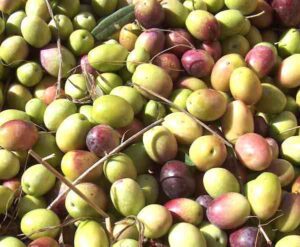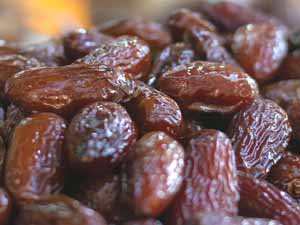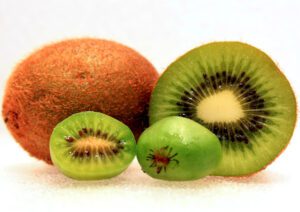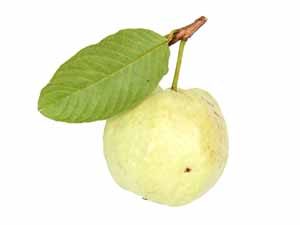Commercial coconut farming is a very old and common business in some areas around the world. Many people are already doing this business and making good profit. Because both demand and value of coconut and it’s products are very high.
Actually, the coconut tree is a member of the palm tree family (Arecaceae) and the only living species of the genus Cocos. Actually, the term ‘coconut’ can refer to the whole coconut palm, the seed (or fruit), which botanically is a drupe, not a nut.
Coconuts are known by many different names in many different places around the world. In India, the tree is known as ‘Kalpavriksha‘ – the ‘tree of heaven‘. As each and every part of the palm is useful to mankind in one way or other.
Coconut tree provides food, drink and timber. Millions of families in India depend on coconut for their livelihood either directly or indirectly. And India ranks 3rd in area and production of coconut in the world.
Coconut is a large palm, growing up to 30 meter tall, with pinnate leaves 4-6 meter long, and pinnae 2-3 feet long; old leaves break away cleanly, leaving the trunk smooth. In good condition and on fertile soil, a tall coconut palm tree can yield up to 75 fruits per year, but more often yields less than 30.
In proper growing condition and if you care the trees well, then you can expect their first fruit within 6 to 10 years. And these type of trees generally take 10-20 years to reach peak production.
Benefits of Coconut Farming Business
Coconut farming is a very old and popular farming business idea. It’s very common throughout the world and many people are already doing this business.
There are numerous benefits/advantages of starting coconut farming business. Here we are trying to describe more about the top advantages of coconut farming business.
- It’s a very old and popular business. Many people are already doing this business. So, you don’t have to worry much about it.
- If you are new in this business, then you will probably be able to learn practically from existing farmers in your area.
- Commercial coconut farming is a very profitable business. And you will be able to make good profits from this business.
- You don’t have to worry much about the future of this business. It’s a very old and established business.
- Growing coconut trees is very easy and the trees are very hardy. They require less caring and other management.
- You can start this business even if you are a beginner.
- Marketing coconut is very easy. Because both green and mature coconut have very good market demand and value.
- Coconut already has an established market demand and value. So, you don’t have to worry much about marketing your products.
- Commercial coconut farming is a very profitable business. So, it can be a great employment source for the people. Especially for the educated but unemployed young people.
- Capital requirement in coconut farming business is relatively less than other business. But you have to wait few years to get better production.
- Coconut is very nutritious and good for heath. And you can enjoy fresh coconut if you start your own coconut farming business.

How to Start Coconut farming Business?
As we have mentioned above, starting coconut farming business is very easy and simple. Coconut trees are very strong and hardy, so they generally require less caring and other management.
And the caring process of coconut tree is very easy, even the beginners can also take good care of them. Although you should learn practically from an existing farmer in your area.
Here we are trying to describe the steps for starting and operating a successful coconut farming from planting, caring to harvesting and marketing.
Step 1: Learn Practically
First of all, try to learn more about this business practically. You can visit some existing farms in your area to learn practically. Try to visit as many farms as you can for having practical knowledge. Like many other business, having practical knowledge is also very important for commercial coconut farming business. So, try to learn practically before starting this business commercially.
Step 2: Complete a Training
Many private NGOs and government collages and universities often provide training facilities for general farmers. You can take the advantages of such training programs.
Step 3: Make a Business Plan
Making a good and effective business plan is also very important. A good and effective business plan helps to start and operate your farm perfectly. So, try to make a good and effective business plan, and work according to the plan. Try to include everything from starting to marketing in your business plan and work according the plan. You can ask for help from an expert if you are new in this business.

Step 4: Select a Good Location
You have to select a very good site/location for starting your commercial coconut farm. Coconut plants are very hardy and they can be grown under different soil types.
Preferred soil types for growing coconut plants are loamy, laterite, coastal sandy, alluvial, clayey and reclaimed soils of the marshy low lands. For getting better production, the selected land must have to have proper drainage system and good water-holding capacity.
Step 5: Prepare Soil Perfectly
Preparing the soil perfectly is the key to successful coconut farming business. Add as much organic contents as you can while preparing the soil. And also use some chemical fertilizers recommended by an expert.
Step 6: Consider the Climate Requirements for Coconut Farming
Coconut plants are very strong and hardy, and they can be grown in a wide variety of climatic conditions. Coconut is actually a tropical plant. The ideal temperature for commercial coconut farming is 27 ± 5° and humidity > 60 per cent. These plants can tolerate wide range in intensity and distribution of rainfall.
However, a well distributed rainfall of about 200 cm per year is considered best for proper growth and better production. Irrigation is required in the areas where rainfall is inadequate.
Step 7: Select the Right Coconut Varieties
Actually, coconut varieties/cultivars are classified into two groups such as tall variety and dwarf variety. Dwarf variety is highly productive, but the tall variety generally produce less.
The dwarf variety is shorter in stature and it’s lifespan is short as compared to the tall. While the tall cultivars that are extensively grown are the West Coast Tall and East Coast Tall. Tall x Dwarf and Dwarf x Tall are the two important hybrids.
Step 8: Determine the Propagation Method
Commercial propagation of coconut plants is done by seed nut. Collect seed nuts when they have reached the desired maturity level.

Coconuts have no dormancy period between seed nut harvesting and germination. And they don’t require pre-planting treatment. So, seed nuts can be planted directly.
Step 9: Purchase Plants
If you can’t produce the plans, then you can consider purchasing the plants from any of your nearest nurseries or coconut farms. You can also purchase plants online (many suppliers available with online presence).
Step 10: Planting
Fill up the pits with top soil and powdered cow dung or compost up to a depth of 0.5 to 0.6 meter. You should do this at least 1 month before planting the plants. Then make a small pit inside the main pit, so that it can accommodate the nut attached to the seedling. Plant the seedling inside this pit and fill up with soil.
After planting, press the soil well to avoid water stagnation. If there is chance for white-ant attack apply Sevidol 8G (5gm.) inside the small pit before planting.
Spacing: In most cases, a square system of planting with a spacing of 7.5 meters x 7.5 meters is considered best for planting coconut plants. And this spacing is enough for accommodating 177 plants per hectare. Although, many different spacing is applied in many different areas around the world. It actually depends on the coconut varieties/cultivars.
Step 11: Caring
Taking good care of the plants is very important for getting healthy and fast growing plants. Here we are trying to describe about the common caring tasks of coconut plants.

Caring of Young Plants
The transplanted seedlings should be shaded and irrigated adequately during the summer months. Also provide staking so that winds may not uproot the young seedlings. For the first two years after planting, irrigate the seedling twice a week during the dry summer months. Shading is a must to the transplanted seedlings.
Fertilizing
Providing the plants with adequate fertilizers is the key to have good production from your trees. Regular manuring from the first year of planting is essential to achieve higher productivity. Organic fertilizers not only keep the plants healthy but also help them to produce more. If you want to use chemical fertilizers, then please contact with an expert in your area.
Watering
Coconut plants responds well to summer irrigation. And summer irrigation at the rate of 40 liters per tree weekly will increase the yield of nuts by 50%. But under basin irrigation, around 200 liters of water per tree once in 4 days will be beneficial.

Drip irrigation system can also be used where water is scarce. The quantity of water recommended for drip irrigation in coconut is 66% of the open pan evaporation.
Weeding
Weeding regularly is very important for healthy plants. Weeds consume nutrients from the soil and your coconut plant will suffer. So, try to keep your field free from weeds.
Mulching
Mulching helps to retain moisture into the soil. Good mulching will also help you to prevent weeds. Use organic materials for mulching.
Step 12 : Consider Inter-Cropping
You can maximize the utilization of soil and sunlight by inter-cropping. You can try a variety of crops like banana, pineapple, elephant foot yam, chilies, groundnut, tapioca, sweet potato etc. You can expect good yield of inter-crops for up to 10 years of the coconut plant.
And in older plantation, you can try perennials like cocoa, pepper, cloves, nutmeg and cinnamon. Mixed farming by growing fodder grasses such as hybrid Napier or guinea grass along with leguminous fodder crops in coconut garden has been found to be profitable which can support the rearing of milch animals.
Step 13 : Prevent Common Pests and Diseases
Pests and diseases are less in coconut plants. Although, you have to keep good contact with an expert in your area.
Step 14 : Harvesting
Actually, coconuts are harvested at varying spans in a year. The frequency differs in different areas depending upon the yield of the trees. In well maintained and high yielding gardens, bunches are produced regularly and harvesting is done once a month. You can harvest either green or mature coconuts depending on the market demands and value. Generally coconuts become mature in about 12 months after the opening of the spathe. It is the ripe coconut which is the source of major coconut products.
Nuts which are eleven months old give fiber of good quality and can be harvested in the tracts where green husks are required for the manufacture of coir fiber. The economic life of a coconut tree is around 65 years.
Yield
It’s really very difficult to tell the exact number or amount. Total yield depends on the variety and conditions under which it is grown. But the average yield per hectare varies from 10,000 to 14,000 coconuts per year.
Step 15: Marketing
Marketing coconuts is very easy and simple. Because coconuts already have very good demand and value in the market. You will be able to sell your products easily to big product companies or local wholesale dealers.

These are the common steps and ways for starting and operating a successful coconut farming business. Hope this guide has helped you! Good luck!
Frequently Asked Questions (FAQs)
People ask many questions about coconut farming. Here we are trying to list the most common questions about coconut production, and trying to answer them. Hope you will find your answer. Don’t hesitate to ask us if you have more questions.
What Are the Nutritional Value of Coconut?
Most of the fruits are high in carbs, while coconuts provide mostly fat. But the MCTs (medium-chain triglycerides) it contains may help you lose excess body fat. It is also a great source of protein, along with many other essential minerals, such as manganese, copper, iron and selenium. According to healthline, the nutrition facts for 100 grams of raw coconut meat:
Calories: 354
Protein: 3 grams
Carbs:15 grams
Fat: 33 grams
Fiber: 9 grams
Manganese: 75% of the Daily Value (DV)
Copper: 22% of the DV
Selenium: 14% of the DV
Magnesium: 8% of the DV
Phosphorus: 11% of the DV
Iron: 13% of the DV
Potassium: 10% of the DV
The nutrition facts for 100 grams of dried coconut meat:
Calories: 650
Protein: 7.5 grams
Carbs: 25 grams
Fat: 65 grams
Fiber: 18 grams
Manganese: 137% of the DV
Copper: 40% of the DV
Selenium: 26% of the DV
Magnesium: 23% of the DV
Phosphorus: 21% of the DV
Iron:18% of the DV
Potassium: 16% of the DV
What Are the Health Benefits of Coconut?
Coconut meat is very tasty and slightly sweet. You can enjoy it in many different ways, either raw or dried. Many products are made from coconut, including coconut milk, cream and oil. There are many health benefits of consuming coconuts. Here we are trying to describe the top health benefits of coconuts.
Coconut is highly nutritious and it provides carbs and protein along with many essential minerals, such as manganese, iron, selenium and copper.
Eating coconut may help to decrease belly fat, and improve cholesterol levels. These are considered as risk factor for heart disease.
As we have mentioned above, coconut is low in carbs and rich in amino acids, healthy fats and fiber. That’s why it is a great choice for blood sugar control.
Coconut meat contains phenolic compounds, which are antioxidants that many help to protect cells from oxidative damage. The main phenolic compounds identified include caffeic acid, gallic acid, salicylic acid and p-coumaric acid. These polyphenol antioxidants can protect your cells from damage, which may reduce your disease risk.
You can enjoy coconut in many different ways either raw or after cooking. You can make sweet and savory foods from coconut. It’s a great choice for those on low-carb, paleo, gluten-free, or nut-free diets.
Is coconut farming profitable?
Yes, commercial production of coconut is a very profitable business.
Is coconut farming sustainable?
Yes, commercial production can be sustainable. Although, it depends on numerous factors including farming practices and environmental management.
How to start coconut farming in Ghana?
Starting a commercial coconut production business in Ghana is relatively easy and simple. Just follow the steps mentioned above.
Is coconut farming profitable in India?
Yes, it is a profitable business in India. Although, you have to determine your marketing strategies before starting this business.
Why are there no coconut farming in United States?
Commercial coconut farming is limited mainly due to climatic and geographic factors. Coconut plants require tropical climates with consistent warmth and humidity. Climate of United States is not suited for growing this plant. Although there are small-scale coconut farms in Hawaii and Florida, but not widespread.







Can we do coconut farming business in Rudrapur, Uttarakhand?
Coconut farming is generally not well-suited for cultivation in Rudrapur, Uttarakhand, due to the region’s climatic conditions. Rudrapur is located in the state of Uttarakhand in northern India, and its climate is characterized by a subtropical highland climate, with cold winters and relatively low temperatures throughout the year. Coconut trees thrive in tropical and subtropical regions with consistently warm temperatures, high humidity, and ample rainfall. They are better suited for coastal areas and regions with a more tropical climate, such as the southern and western coastal regions of India. Uttarakhand, on the other hand, experiences cold winters and lower temperatures, particularly in the higher elevations, which are not conducive to coconut cultivation. Coconut trees are sensitive to frost and cold temperatures, and they require a warm and humid climate to grow successfully. If you are interested in agribusiness, then you should consider crops and farming practices that are better suited to the region’s climate and environmental conditions, such as fruits, vegetables, grains, or horticultural crops that thrive in cooler and temperate climates. Hope this will help. Good luck & may God bless you!